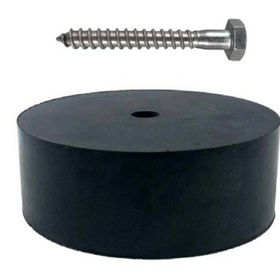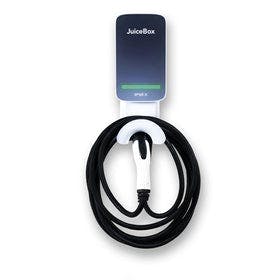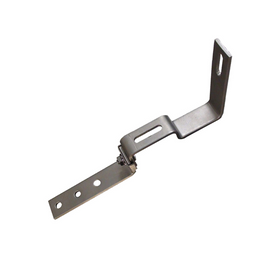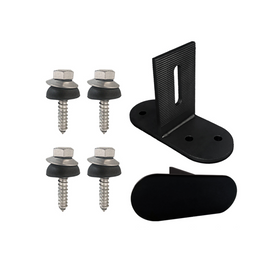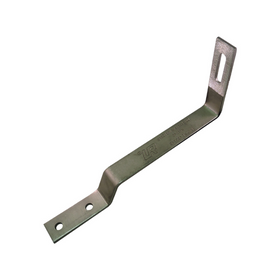
How Much Electricity Does it Use?
Last Updated: Apr 13, 2025In a recent interview with Justin Allen about his off-grid home, he explains how important it is to understand the electricity usage of every appliance in the house. It is fundamental to living a more sustainable lifestyle. Learning to pay more attention to the amount of energy we use in our homes can help us reduce our energy bills and carbon footprint.
According to the Energy Information Administration (EIA), 33% of the carbon dioxide (CO2) emissions in the United States were associated with electricity generation in 2018. While homeowner behavior can significantly improve the operational efficiency of homes, behavioral changes rely on a basic understanding of how much energy devices in our homes use. To help homeowners reduce the amount of electricity their homes use, we offer a breakdown of the electricity consumption of some of the most common household appliances and devices.
Homeowners can also use energy monitoring devices to monitor energy consumption within their homes. Not all devices are created equal as some devices on the market offer tracking at the outlet level while others offer whole home monitoring. Nonetheless, energy monitoring devices help identify problematic devices or products within your home or areas of opportunity to reduce their overall electricity usage.
Table of Contents
- What is a Kilowatt-Hour?
- How Much Electricity Do We Use A Day?
- How Much Electricity Do Light Bulbs Use?
- How Much Electricity Do Christmas Lights Use?
- How Much Electricity Do Fans Use?
- How Much Electricity Do Laptop and Desktop Computers Use?
- How Much Electricity Do Refrigerators and Mini-Fridges Use?
- How Much Electricity Do Dishwashers Use?
- How Much Electricity Do Electric Stovetops Use?
- How Much Electricity Do Microwaves Use?
- How Much Electricity Do Toaster Use?
- How Much Electricity Do Coffee Machines Use?
- How Much Electricity Do Clothes Washing Machines Use?
- How Much Electricity Do Clothes Dryers Use?
- How Much Electricity Do Air Conditioners Use?
- How Much Electricity Do Water Heaters Use?
- How Much Electricity Do Electric Vehicles Use?
What is a Kilowatt-Hour?
Kilowatt-hour (kWh) is a unit of consumption by an electrical device will have a wattage rating—like a hairdryer that says, “1,800 watts.” But that is not usage—it just means that’s how much wattage it will take to use it. It would help if you had the run-time of the appliance to know precisely how much electricity it is using, and that can vary greatly. For example, one 100-watt light bulb that is turned on for 10 hours equals 100 x 10 = 1,000 watt-hours, which is equal to one kilowatt-hour. To translate that into costs, we pay about ten cents per kilowatt-hour—but that differs significantly by utility and region.
How Much Electricity Do We Use A Day?
In 2018, the average annual electricity consumption for a US household was 10,972 kWh kilowatt-hours (kWh), which averages 867 kWh per month or over 28 kWh per day. So if you are looking to reduce your electricity usage, it starts with awareness of what is using most of it in your own home.

How Much Electricity Do Light Bulbs Use?
The average home has around 45 light bulbs, representing about 6 percent of the total household electricity consumption. However, the lights in our homes still require about 91 billion kWh of electricity each year. Homeowners can drastically reduce their energy demand by replacing their old incandescent bulbs with CFLs or LEDs.
Incandescent light bulbs generally consume anywhere between 40 and 100 watts of energy. While each bulb only costs around $1, the lifespan is only 1,200 hours, meaning that you can expect to pay about $180 for the electricity used over 25,000 hours.
CFL light bulbs use an average of 14 watts of electricity, cost around $2 each, and only cost you $48 of energy over that same 25,000 hour period.
LED light bulbs, which are the most energy-efficient option on the market today, cost around $5, use approximately 6-8 watts of energy, and would only cost about $35 for 25,000 hours of use.

How Much Electricity Do Christmas Lights Use?
Christmas lights are an annual tradition. One recent analysis found that homes using twinkling incandescent bulbs use an average of 600 kWh of electricity each Christmas season. Most 100 light strings of Christmas lights use 40 watts, similar to small incandescent bulbs. For homes that use ten strings of these lights, the equivalent would be ten extra light bulbs left on at night or ten times the cost, depending on how you want to look at it.
LED Christmas lights can reduce the electricity requirements for decorating during the holidays and costs homeowners around 100 kWh of electricity. That is one-sixth of what incandescent lights use. Each string of 100 mini incandescent bulbs will cost about $3.50 over the Christmas season, while a string of 100 mini LEDs will cost just $0.45.

How Much Electricity Do Fans Use?
During the summer, ceiling fans can certainly help to cool down your home. Even during the winter, fans can help distribute heat in your home that tends to rise towards the ceiling. Fans (both floor and ceiling) use anywhere between 25 and 100 watts, so the amount of electricity they use depends on how many hours they are turned on. Brushless motor fans require much less energy than traditional AC fans using an induction motor.
Larger fans with circumferences of 56 inches will use higher wattage, while the typical 48-inch ceiling fan uses 75 watts. If your fan is running continuously, it is comparable to leaving 8-10 LED lights throughout the day. If running fans reduces reliance on cooling and heating systems, then that energy usage can be a strategy to increase your home's operational efficiency. The average AC ceiling fan requiring 75 watts costs $14.24 per year to run for 4 hours per day at $0.13 kWh, while the average brushless costs $5.31 per year. Fans with brushless motors are slightly more expensive, but the motors are highly efficient and have a longer life span.

How Much Electricity Do Laptop and Desktop Computers Use?
The average desktop computer uses between 60 and 300 watts. Laptops, on the other hand, only use about 20 to 50 Watts of electricity. The electricity demand of laptops can be further reduced when using the device in power-saving modes. Whether you use a laptop or desktop, make sure that you choose an option with an LED screen, as this will dramatically reduce the computer's energy demand.
Assuming the average laptop draws 120 watts, it will cost roughly $126 per year to power. The average desktop computer costs $2.37 per month to operate but can vary depending on the computer's power supply and total draw. Computers built for photo and video editing or gaming will require more power to operate.

How Much Electricity Do Refrigerators and Mini-Fridges Use?
Unless you own and operate a root cellar, the chances are that your home has a refrigerator to preserve the food you eat. While domestic fridges' power consumption has declined in recent years, the average refrigerator still uses somewhere between 100 and 200 watts of electricity. And since they are always running, this amounts to about 13 percent of the energy on your monthly electricity bill.
For homeowners who are serious about cutting down on their energy usage, mini-fridges between 1.7 to 4.4 cubic feet can consume as little as 20 kWh per month. There are also direct current fridges specifically designed for off-grid living and consume much less energy than mini-fridges. The annual operating cost of a 19.0-21.4 cubic feet ENERGY STAR refrigerator manufactured after 2011 is $53.00.

How Much Electricity Do Dishwashers Use?
Dishwashers can be found in most modern homes and apartments. Their primary use is to clean dishes, pots and pans, cutlery, and other kitchen appliances that are dishwasher safe. Contrary to popular belief, dishwashers are more environmentally friendly than you may think. A study at the University of Bonn in Germany found that hand-washing dishes required 27 gallons of water and 2.5 kilowatt-hours, on average. In comparison, an ENERGY STAR dishwasher uses just 4 gallons and 1-2 kilowatt-hours, thus requiring one-sixth of the water and half of the electricity of washing by hand!
Dishwasher wattage can range between 1,200 and 2,400 depending on multiple variables, including size, water usage, and efficiency. On average, a standard size ENERGY STAR dishwasher requires 1,800 watts, which costs approximately $35 per year to operate, not including cleaning detergents.

How Much Electricity Do Electric Stovetops Use?
Electric stovetops are used to heat or cook food and often include two small burners and two large burners. The energy used depends on the unit's efficiency, which can range from 1,000 to 3,000 watts, with the average landing around 1,500 watts per hour using a medium to high setting.
Assuming an electricity rate of $0.13 per kWh, an electric stovetop will cost $0.19 per hour of use. Most 7-inch induction cooktops require 1,500 watts and would have a similar cost per hour as an electric stovetop. An important consideration is the stovetop or cooktop's efficiency and the time necessary to reach your desired temperature. For example, an induction cooktop can boil water in 4 minutes, while electric requires 7 minutes, and gas requires 8 minutes. Induction cooktops can significantly reduce the overall cooking time. If you're curious why we didn't cover gas in more detail, you should check out our article on why you should choose an all-electric home over natural gas.

How Much Electricity Do Air Conditioners Use?
Conditioned air inside our homes is a luxury that many of us depend on. The EIA states that over half of our homes' energy usage is for cooling or heating the air. The average central air conditioning unit will use between 3,000 to 5,000 watts of power, with an average of 3,500 watts, for around 8 hours a day during the hotter months. At a kWh rate of $0.13, the average cost to run a 3,500-watt central air conditioning unit for 8 hours is $3.64.
The typical 12,000 BTU window air conditioning unit will cost $2.06 per day if operating for 8 hours, cooling 350-400 square feet. A heat pump can often cool twice the square footage of a window air conditioner at the same price. It's no surprise that one way to cut back on your heating and cooling needs is by switching to a heat pump. Another is to use a smart thermostat, which allows you to control the temperature in your home remotely.

How Much Electricity Do Electric Vehicles Use?
Electric cars are measured in kilowatt-hours per one hundred miles. For example, the 2017 Volkswagen e-Golf uses around 26.44 kWh per 100 miles of range in the city. So if you drive 15,000 miles in a year, your car would use almost 4,000 kWh in electricity for the entire year. Depending on your driving habits, five 100-watt light bulbs left on continuously for one year would use about the same amount of electricity as it takes to drive that EV.
- A Tesla Model 3 with a 50 kWh battery will cost $6.50 to charge (at $0.13 per kWh) with a standard range of 240 miles (386 kilometers)
- A Chevy Bolt EV with a 60 kWh battery will cost $7.80 to charge (at $0.13 per kWh) and has a range of 238 mi (383 kilometers)
- A Nissan Leaf with a 40 kWh battery will cost $5.20 to charge (at $0.13 per kWh) and has a range of 151 miles (243 kilometers)
Tobias Roberts
Tobias runs an agroecology farm and a natural building collective in the mountains of El Salvador. He specializes in earthen construction methods and uses permaculture design methods to integrate structures into the sustainability of the landscape.










